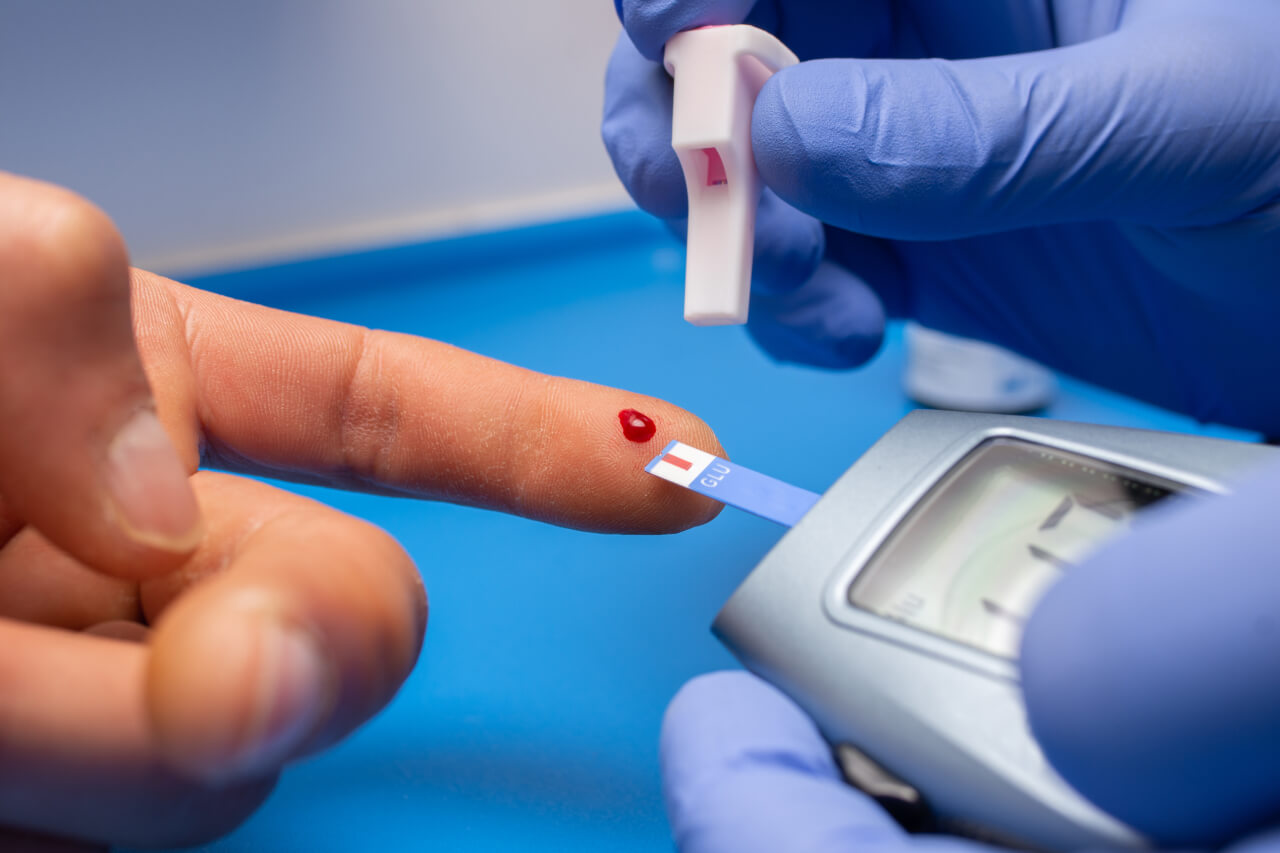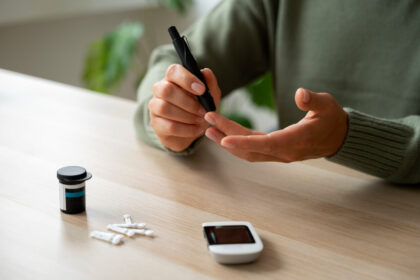Diabetes is a chronic condition that affects millions of people worldwide. It occurs when the body cannot produce enough insulin or use it properly, resulting in high blood sugar levels.
Diabetes can cause serious complications, such as heart disease, stroke, kidney failure, nerve damage, and vision loss.
Managing diabetes can be challenging, as it requires constant monitoring, medication, and lifestyle changes.
However, there are effective strategies that can help you prevent or control diabetes and improve your overall health and well-being.
These strategies are based on a holistic approach, which means that they consider the physical, mental, emotional, and spiritual aspects of your health.
In this blog post, we will unveil some of the best holistic strategies for diabetes, and explain how they can benefit you.
We will also provide some practical tips and resources to help you implement them in your daily life.
1. Eat a balanced and nutritious diet
One of the most important strategies for diabetes is to eat a balanced and nutritious diet.
This means that you should include a variety of foods from different food groups, such as fruits, vegetables, whole grains, lean proteins, healthy fats, and dairy products.
These foods can provide you with the essential nutrients, such as vitamins, minerals, antioxidants, and fiber, that your body needs to function properly and prevent or manage diabetes.
You can check out more about Varieties of food here
Some of the specific benefits of eating a balanced and nutritious diet for diabetes are:
- It can help you maintain a healthy weight, which can reduce your risk of developing type 2 diabetes or improve your blood sugar control if you already have diabetes.
- It can help you lower your cholesterol, blood pressure, and triglyceride levels, which can reduce your risk of cardiovascular complications from diabetes.
- It can help you regulate your blood sugar levels, by providing you with complex carbohydrates that are digested slowly and do not cause spikes or crashes in your blood sugar.
- It can help you prevent or delay the onset of diabetes complications, such as kidney disease, nerve damage, and eye problems, by providing you with antioxidants that can protect your cells from oxidative stress and inflammation.
Some of the practical tips and resources to help you eat a balanced and nutritious diet for diabetes are:
Follow the plate method, which is a simple way to plan your meals.
It involves filling half of your plate with non-starchy vegetables, such as broccoli, spinach, or carrots, a quarter of your plate with lean protein, such as chicken, fish, or tofu, and a quarter of your plate with whole grains, such as brown rice, quinoa, or oats.
You can also add a small portion of fruit and a low-fat dairy product, such as yogurt or cheese, to complete your meal4
Choose foods that have a low glycemic index (GI), which is a measure of how quickly a food raises your blood sugar levels. Foods that have a low GI are digested slowly and do not cause rapid changes in your blood sugar.
Some examples of low GI foods are beans, lentils, apples, berries, and nuts.
Avoid or limit foods that have a high GI: Which are digested quickly and can cause spikes in your blood sugar. Some examples of high GI foods are white bread, white rice, potatoes, sugary drinks, and candies.
Include foods that are rich in fiber: Which can help you feel full and satisfied, lower your cholesterol and blood sugar levels, and improve your digestion and bowel movements.
Some examples of high-fiber foods are fruits, vegetables, whole grains, legumes, and seeds.
Include foods that are rich in protein: Which can help you build and repair your muscles, bones, and tissues, and keep your blood sugar levels stable.
Some examples of high-protein foods are lean meats, poultry, fish, eggs, dairy products, soy products, and nuts.
Include foods that are rich in healthy fats: Which can help you lower your cholesterol and triglyceride levels, and protect your heart and brain.
Some examples of healthy fats are olive oil, avocado, salmon, walnuts, and flaxseeds.
2. Be physically active
Another important strategy for diabetes is to be physically active.
This means that you should engage in moderate to vigorous physical activity for at least 150 minutes per week, or about 30 minutes per day for five days a week.
You should also include some strength training exercises for your major muscle groups at least twice a week.
Some of the specific benefits of being physically active for diabetes are:
- It can help you lose weight or maintain a healthy weight, which can reduce your risk of developing type 2 diabetes or improve your blood sugar control if you already have diabetes.
- It can help you lower your blood pressure and cholesterol levels, which can reduce your risk of cardiovascular complications from diabetes.
- It can help you improve your insulin sensitivity, which means that your body can use insulin more efficiently and lower your blood sugar levels.
- It can help you prevent or delay the onset of diabetes complications, such as nerve damage, by improving your blood circulation and nerve function.
- It can help you improve your mood and mental health, by releasing endorphins and serotonin, which are natural chemicals that make you feel happy and relaxed.
Some of the practical tips and resources to help you be physically active for diabetes are:
Choose an activity that you enjoy and that suits your fitness level and preferences.
You can do aerobic activities, such as walking, jogging, cycling, swimming, or dancing, which can improve your heart and lung function and burn calories.
You can also do strength training activities, such as lifting weights, doing push-ups, or using resistance bands, which can build your muscles and bones and increase your metabolism.
You can also do flexibility activities, such as stretching, yoga, or pilates, which can improve your range of motion and posture and prevent injuries.
Start slowly and gradually increase your intensity and duration. If you are new to physical activity or have not been active for a long time, you should start with low-intensity and short-duration activities, such as walking for 10 minutes, and gradually increase your intensity and duration, such as walking for 30 minutes or more.
You should also warm up before and cool down after each session, to prevent injuries and soreness.
Monitor your blood sugar levels before and after exercise.
Physical activity can lower your blood sugar levels, which can be beneficial for diabetes, but it can also cause hypoglycemia, which is a condition where your blood sugar levels are too low and can cause symptoms such as dizziness, sweating, shakiness, or confusion.
To prevent hypoglycemia, you should check your blood sugar levels before and after exercise, and adjust your medication, food, or activity accordingly. You should also carry a fast-acting carbohydrate, such as glucose tablets, juice, or candy, in case of hypoglycemia.
Stay hydrated and wear comfortable clothing and footwear.
Physical activity can cause dehydration, which can affect your blood sugar levels and your performance.
To prevent dehydration, you should drink plenty of water before, during, and after exercise, and avoid alcohol and caffeine, which can dehydrate you.
You should also wear comfortable clothing and footwear that are suitable for the weather and the activity, and that do not cause blisters, chafing, or irritation.
3. Manage your stress and mental health
Another important strategy for diabetes is to manage your stress and mental health.
This means that you should find healthy ways to cope with the stressors and challenges that you face in your life, and seek professional help if you have any mental health problems, such as depression, anxiety, or eating disorders.
Some of the specific benefits of managing your stress and mental health for diabetes are:
It can help you lower your blood pressure and cortisol levels, which can reduce your risk of cardiovascular complications from diabetes.
It can help you improve your blood sugar control, by reducing your emotional eating, binge eating, or skipping meals, which can affect your blood sugar levels.
It can help you improve your adherence to your diabetes treatment plan, by increasing your motivation, confidence, and self-efficacy, which can help you follow your medication, diet, and exercise recommendations.
It can help you improve your quality of life and well-being, by enhancing your happiness, satisfaction, and resilience, which can help you cope with the challenges and complications of diabetes.
Some of the practical tips and resources to help you manage your stress and mental health for diabetes are:
Practice relaxation techniques, such as meditation, breathing exercises, progressive muscle relaxation, or guided imagery, which can help you calm your mind and body, and reduce the negative effects of stress on your gut and brain.
Seek social support, such as from your family, friends, or support groups, which can help you cope with the emotional and practical challenges of living with diabetes, and provide you with encouragement, advice, and comfort.
Seek professional help, such as from your doctor, psychologist, or counselor, if you have any signs or symptoms of mental health problems, such as depression, anxiety, or eating disorders.
These can affect your diabetes management and your quality of life, and may require medication or therapy.
4. Use complementary and alternative therapies
Another possible strategy for diabetes is to use complementary and alternative therapies, which are practices or products that are not part of conventional medicine, but may have some benefits for your health and well-being.
These include herbal remedies, acupuncture, massage, yoga, and more.
Some of the potential benefits of using complementary and alternative therapies for diabetes are:
They may help you lower your blood sugar levels, by stimulating your pancreas, improving your insulin sensitivity, or enhancing your glucose uptake.
They may help you lower your blood pressure and cholesterol levels, by relaxing your blood vessels, reducing your inflammation, or modulating your lipid metabolism.
They may help you improve your mood and mental health, by reducing your stress, anxiety, or depression, or increasing your happiness, satisfaction, or spirituality.
They may help you improve your quality of life and well-being, by providing you with a sense of control, empowerment, or harmony, or enhancing your self-care, self-esteem, or self-compassion.
Some of the practical tips and resources to help you use complementary and alternative therapies for diabetes are:
Consult your doctor before using any complementary and alternative therapies, as they may have side effects, interactions, or contraindications with your diabetes medication or other medical conditions.
You should also inform your doctor about any complementary and alternative therapies that you are using, as they may affect your diabetes management and monitoring.
Choose a reputable and qualified practitioner or provider, who has experience and expertise in treating diabetes with complementary and alternative therapies.
You should also check their credentials, references, and reviews, and ask them about their training, certification, and fees.
Use complementary and alternative therapies as an adjunct, not a substitute, for your conventional diabetes treatment.
You should not stop or change your diabetes medication or other medical advice without consulting your doctor.
You should also continue to follow your diabetes care plan, including your diet, exercise, and self-monitoring.
Conclusion
Diabetes is a complex and chronic condition that requires a comprehensive and holistic approach to manage and prevent.
By following these strategies, you can improve your physical, mental, emotional, and spiritual health, and reduce your risk of diabetes complications and comorbidities.
- These strategies are:
- Eat a balanced and nutritious diet
- Be physically active
- Manage your stress and mental health
- Use complementary and alternative therapies
By following these strategies, you can unveil the potential of holistic health for diabetes, and enjoy a better quality of life and well-being.
FAQs
What are some effective strategies for holistic health in diabetes?
Incorporating a balanced diet, regular physical activity, and constant monitoring of glucose levels are key strategies.
Additionally, stress management and emotional support also play a crucial role.
How can diet affect holistic health in people with diabetes?
Diet significantly influences holistic health in diabetes.
Opting for balanced foods, controlling portions, and avoiding added sugars can help maintain stable glucose levels and promote cardiovascular health.
What is the importance of physical activity in the comprehensive management of diabetes?
Regular physical activity improves insulin sensitivity, controls weight, and promotes cardiovascular health.
These benefits contribute significantly to comprehensive diabetes management.
How does stress impact holistic health in people with diabetes?
Stress can negatively affect glucose levels and overall health in people with diabetes.
Strategies such as meditation and stress management are essential to maintain holistic balance.
What is the role of emotional support in comprehensive diabetes care?
Emotional support is crucial. Having a support network, whether through friends, family, or support groups, can help manage the emotional impact of living with diabetes and promote holistic health.
What advice can you give for taking a holistic approach to diabetes?
Prioritize regular medical care, maintain open communication with the healthcare team, cultivate healthy habits, and seek emotional balance.
These are key pieces of advice for an effective holistic approach to diabetes.





